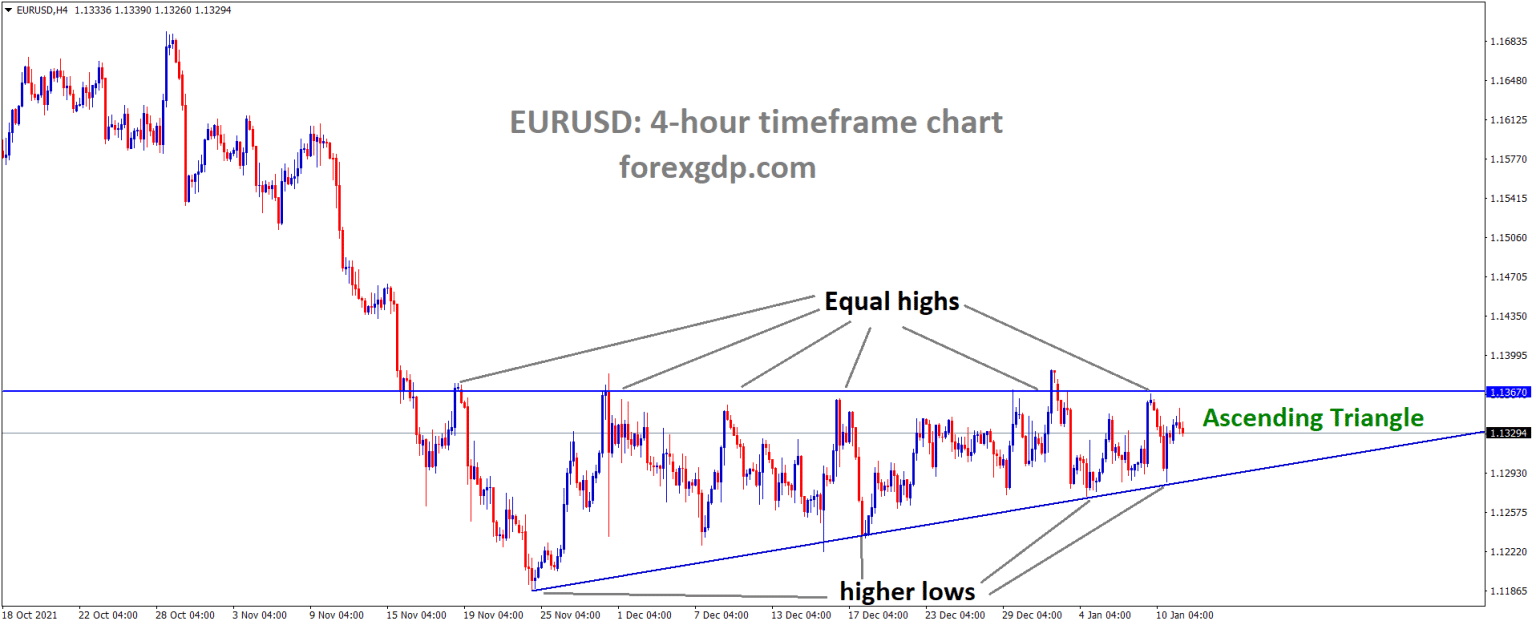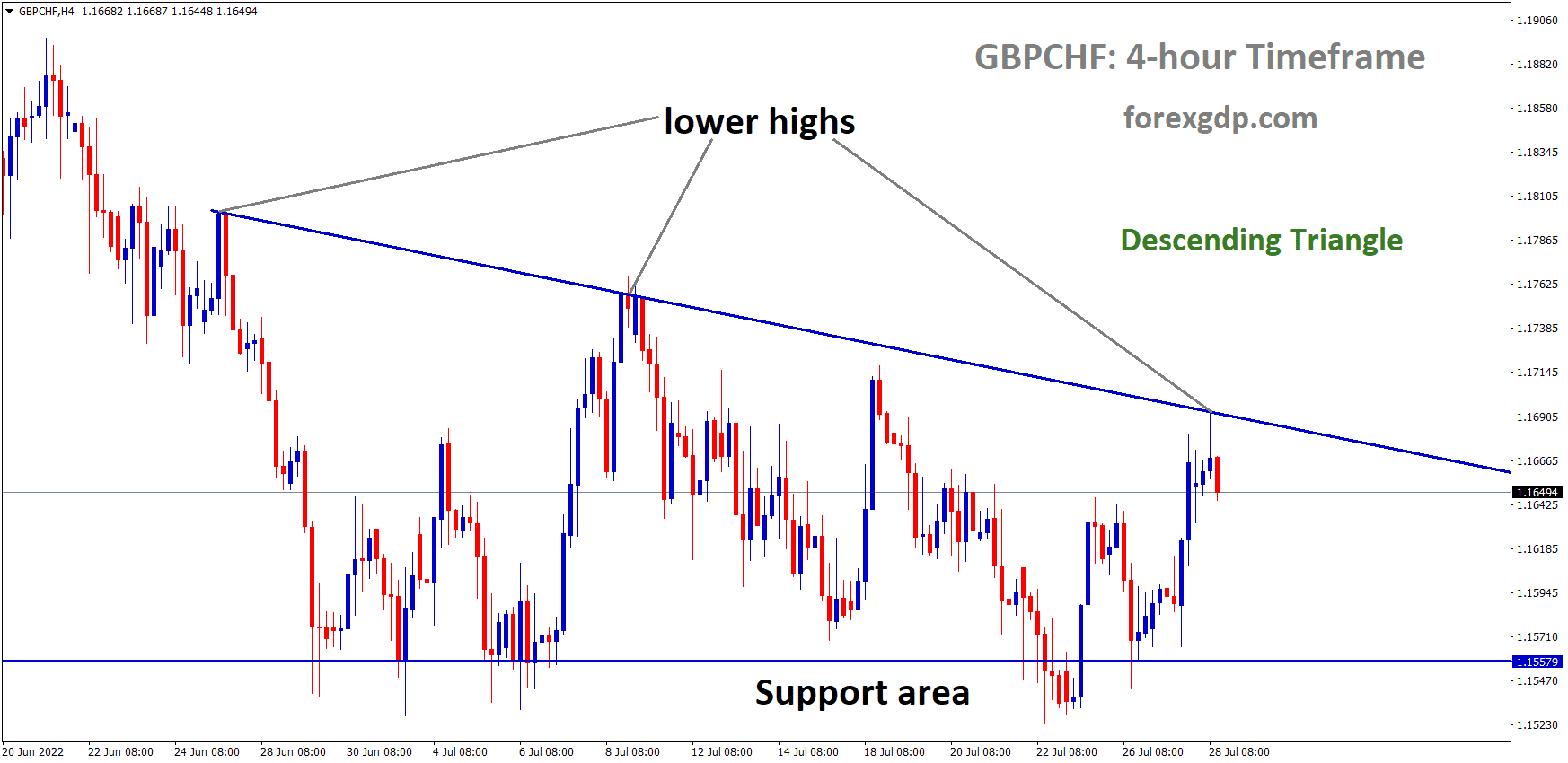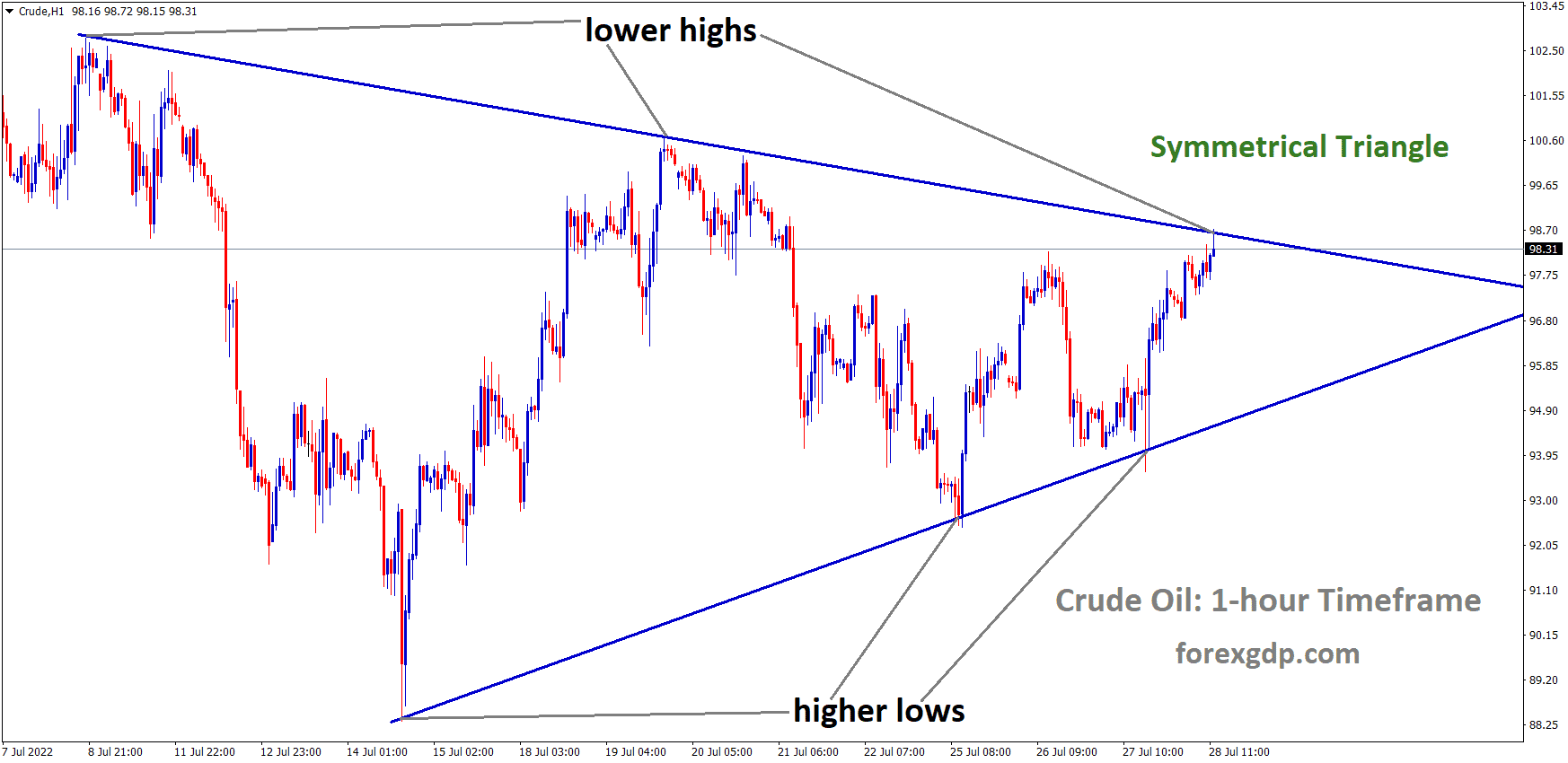What Is A Triangle Pattern
Trading patterns that most closely resemble triangles are called horizontal triangles. The triangle is in its most expanded stage just at the beginning of its development. The point of the triangle is produced while the market continues to operate in a pattern that is described as sideways. This results in a narrowing of the trading range.
The triangle represents a loss of interest in an issue from both the buy-side and the sell-side, as seen by the fact that the supply line narrows to match the demand. This is the most basic representation of the triangle. Consider the line that forms the bottom of the triangle, also known as the lower trendline, to be the demand line. This line acts as support on the chart.
At this stage, there is a greater number of people purchasing the asset than there are selling it, which results in a price increase for the assets. The supply route is the main section of the triangle. It indicates the overbought side of the economy, which occurs when investors are cashing in their profits and leaving the market.
Types of Triangle Patterns
There are three primary versions of the triangle pattern, which may commonly be found in the forex market. Traders gain a deeper understanding of future price movement and the likelihood of a continuation of the trend by analyzing these patterns. However, not all triangle patterns may be understood in the same manner, which is why it is vital to have an in-depth understanding of each triangle shape in its own right.
Ascending Triangle
Price action patterns that have a horizontal top and an ascending bottom are referred to as ascending triangles. One definition of an ascending triangle is as follows: A breakout can occur on the upside by breaking through the horizontal resistance or on the downside by penetrating the rising slope. Both scenarios are possible.

An ascending triangle is formed when a horizontal trend line is used to link the minor highs and a rising line is used to connect the minor lows. This results in the formation of the triangle. In most cases, the formation of the ascending triangle patterns takes between one and two months.
The majority of the calculation takes place from the beginning of the pattern all the way up until the breakout, but not until the pinnacle. As the price makes many trips between the resistance and the support, the volume of trades becomes increasingly scarce. Only if the price makes two different minor highs prior to any breakout will the pattern be considered genuine.
The point where the trendlines meet is known as the apex of the triangle, but prices might break out much before that point. Before going outside of the bounds, the price action must first fill the body inside the trendline. Prices shouldn’t travel along just one of the trendlines; rather, they should move along both of them.
During the first phases of the formation, there will be a significant amount of volume activity. Despite this, while the price movement remains contained inside the limits, the volume begins to diminish and may even reach an extremely low level right before the breakout.
Although the volume action presented here is a model formation, it is not unusual for there to be variances. Especially upward breakthroughs should be accompanied by a significant increase in volume. On the other hand, a breakout to the downside with minimal volume activity performs better.
Descending Triangle
A bearish pattern known as a descending triangle is characterized by a price formation that should include a horizontal support line and a declining peak. Breakouts can occur in either the upward or downward direction. This is despite the fact that a breakthrough to the downside during a bear market might result in significant profits.

The prices follow a pattern in which they tend to continue decreasing to the same region and then bouncing back each time, although the height of the bounce is lower than the height of the preceding price. Although volume often follows a declining trend from the beginning of the formation, this is not an essential benchmark to pay attention to.
The volume will be rather modest for the most part shortly before the breakout, but then it will erupt during the activity that follows. You shouldn’t disregard a breakout just because of the volume activity, as we covered when we were talking about rising triangles before.
There are also many successful breakouts that occur on low volumes. In a manner comparable to that of ascending triangles, the breakout might potentially take place in advance of the point at which the support and resistance lines meet.
At least two minor lows that touch the horizontal support line should be present inside the body of the formation. You should be able to differentiate between the moves that contact the bottom line, and you should group the touches that occur during the same consolidation together when counting them.
Symmetrical Triangle
Price formations known as symmetrical triangles are characterized by the presence of support and resistance lines that converge and slope in the same direction towards one another. The resistance line dips lower from its starting point at the top, while the support line climbs higher from its starting point at the bottom.

To form a triangle pattern, it is essential to have at least two minor highs and lows, much like the other triangle patterns. To determine whether or not the pattern is genuine, it is recommended that you count only the individual touches. The price motion needs to fill the area in between the two sloping lines, and there need not be a great deal of white space within the body itself.
In most cases, the volume will decrease as the development progresses. Nevertheless, there are other instances in which it is irregular. Just prior to the breakthrough, the volume reaches its lowest point. Establishing symmetrical triangles often requires a period of more than three weeks. The breakout direction might be either upwards or downwards. Both are possible.
The formation may occasionally result in no breakout, which then leads to actions that are unremarkable. The fact that a broken pattern offers a greater outcome than the original breakout deal is an intriguing add-on to this pattern that may be used in trading. That, if a triangle breaks out, but then fails to move more than 5 percent and then comes back, and then penetrates through the other side of the symmetrical triangle, the trade deal, which is in the complete opposite direction of the original breakout position, might result in a much more fruitful outcome.
A reversal such as this one has the potential to result in significant returns if the move occurs in the underlying trend’s intended direction. When traded in the direction of the prevailing trend in the broad market, symmetrical triangles produce the highest returns for investors.
This means that investors should trade upward breakouts in a bull market and trade downward breakouts in a bear market. Despite this, the upward breakthrough might still yield 15 percent gainers with minimal failure rates, even in a depressed market.
What to Know When Trading Triangle Patterns
As you have seen previously, the triangle formations are only genuine if the price makes several trips back and forth between the two trend lines. This is necessary for the formation to be considered valid.
The price formation shouldn’t have many blank areas, which means that the price shouldn’t wander along, always touching one of the borders, in the moments leading up to a breakout. The price formation must include a minimum of two different minor highs and minor lows in order to be considered valid.
You should also get your head around the fact that false breakouts are prevalent in Triangle Patterns and that you should be psychologically ready for them. This is another crucial piece of information to have.
Check that the pattern has at least two separate encounters with the boundary lines before attempting to break out of it. The volume often begins to dwindle just before a breakthrough occurs. Learn how the volume behaves in the patterns, and keep an eye out for any strange developments.
Conclusion
In the end, just as with any other type of financial tool, utilizing triangle patterns successfully boils down to having patience and doing your research as thoroughly as possible. In spite of the fact that these three triangle patterns have a tendency to point toward certain signs and indications, it is essential to maintain alertness and keep in mind that the market is not famous for being reliable and may rapidly change its course. Before taking on a new position in the market, sensible traders who are monitoring the formation of what seems to be a triangular pattern will wait for the breakout to be confirmed by the price action in order to avoid making a mistake.
Forex signals are a great way to get profitable trades, even if you don’t know how to analyze chart patterns yet. Expert analysts will provide you with appropriate risk management strategies, so you don’t make the top forex mistakes like every trader. Don’t trade all the time. Trade only at the best trade set up with Forex GDP.
